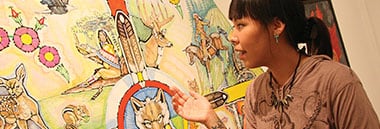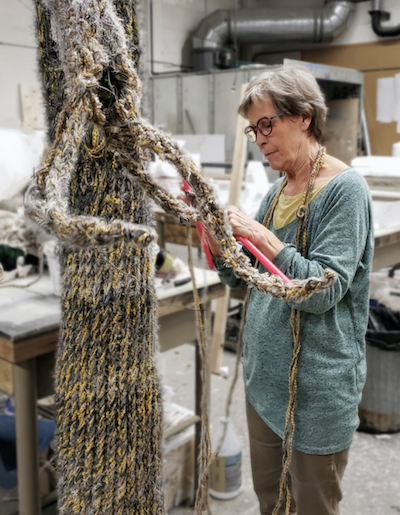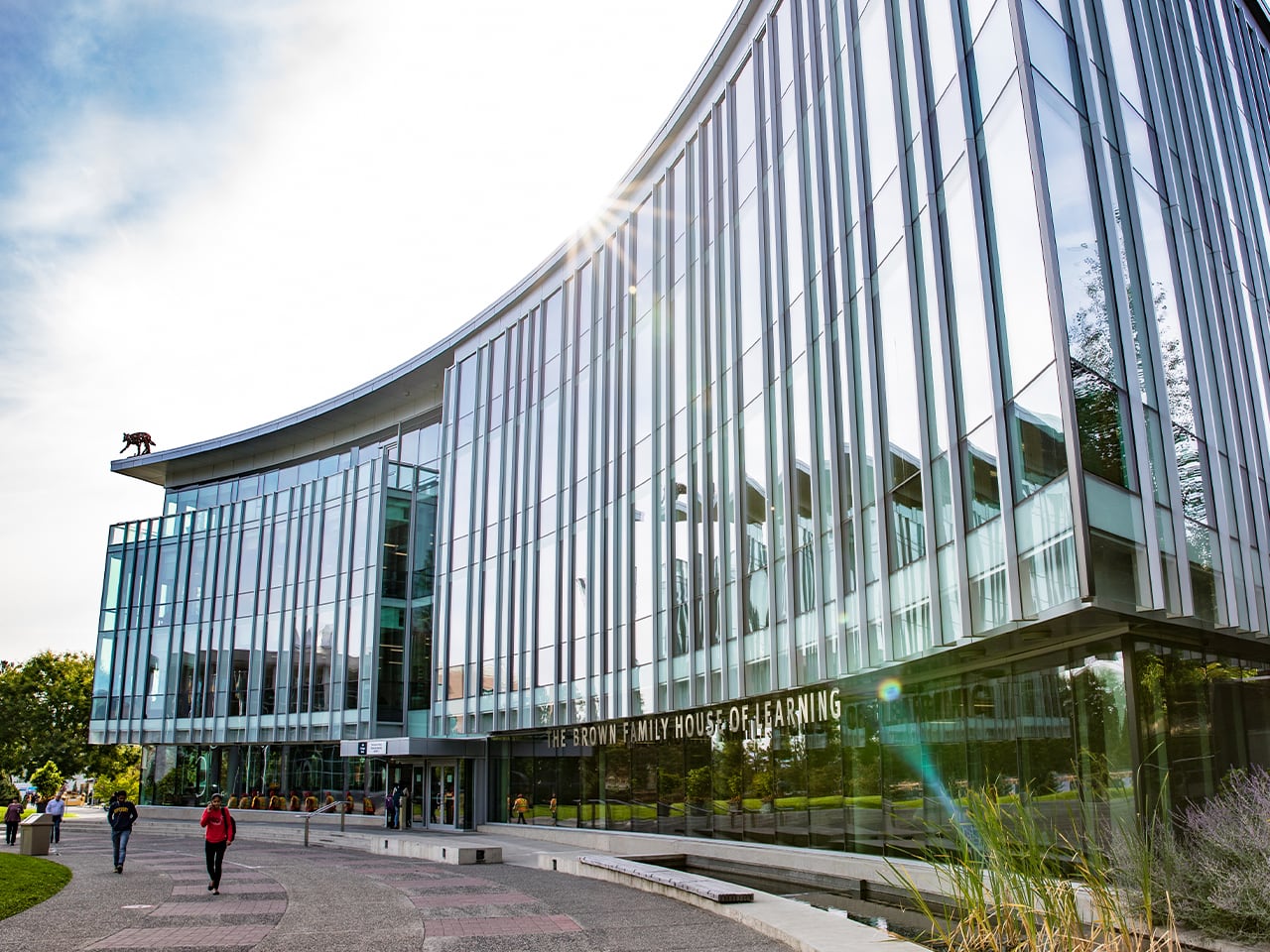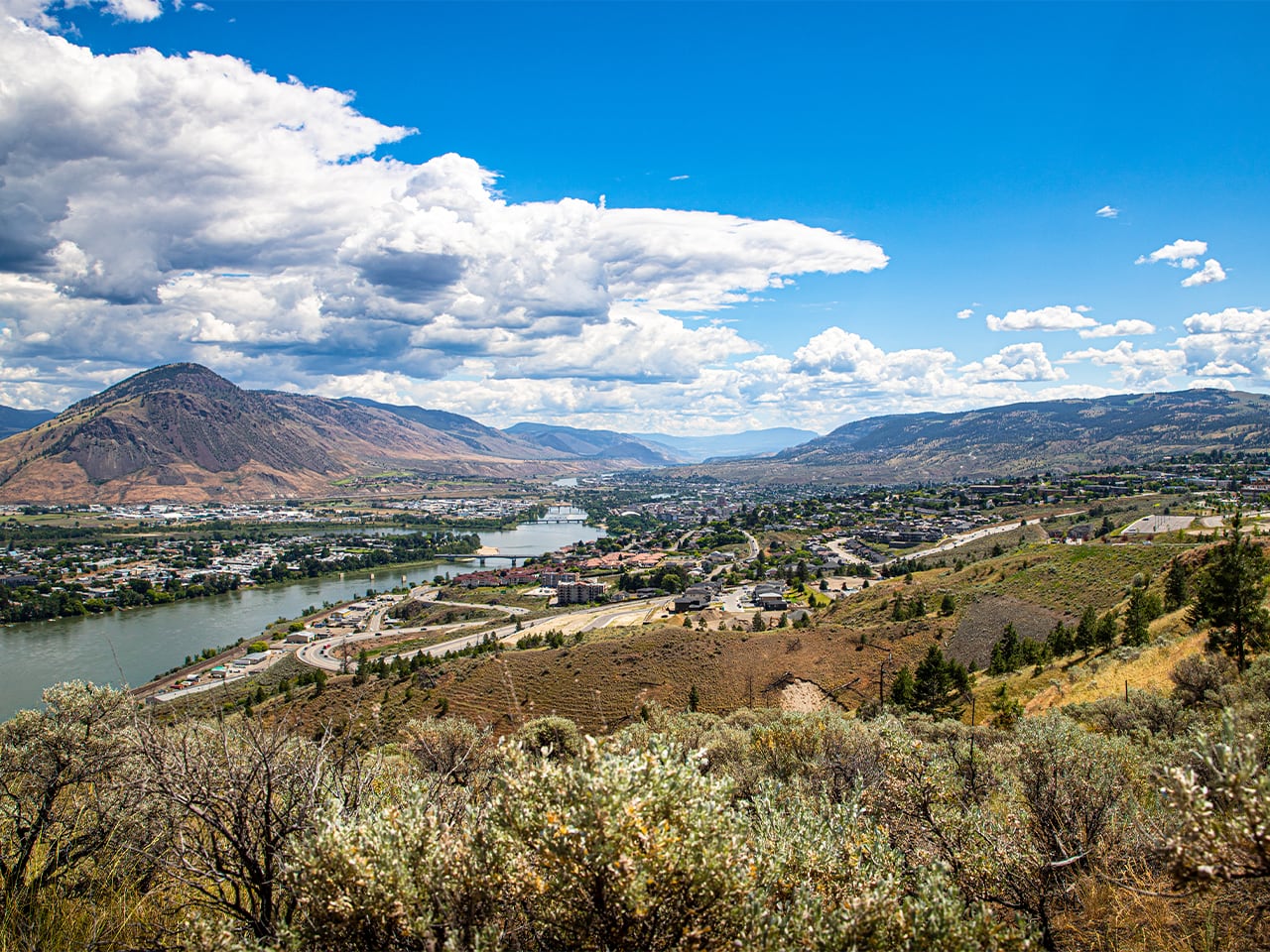Thank you for your interest in the Visual Arts program at TRU. This program is not currently accepting applications.
Explore the dimensions of your creativity through a broad range of studio and theoretical courses in a variety of media. Benefit from 26,000 square feet of workshops and studio space and an art gallery for your work alongside other student and faculty exhibitions. Shaped around a core curriculum of studio, art history and theory courses, this degree encourages an interdisciplinary approach to learning which takes advantage of the many facets of the university community.
Graduates will be skilled in current and traditional practices in a variety of visual arts mediums and processes, which can include:
- Drawing
- Painting
- Photography
- Printmaking (etching and silkscreen)
- Ceramics
- Sculpture
- Video and intermedia
- Gallery studies
While instruction is offered in each studio area, we encourage you to work across these disciplines as well, particularly in the fourth year Graduating Studies. Courses in these areas, as well as courses in historical, modern and contemporary Art History and Theory make up the core of the BFA.
From theory to gallery
Experiment with a variety of mediums and focus on your studio work away from distraction. Find inspiration and motivation within your studios.
- Advance your skills in paint mixing, application techniques and complex approaches with everything from watercolour to oil.
- Explore printmaking with silkscreen, etching and develop your photographic media expertise within the dark room and processing studio.
- Work within a range of materials, objects, techniques, and ideas fundamental to three dimensional aspects of visual art.
- Gain a working knowledge of topics related to historical and contemporary practices.
- Drawing from this to define and discuss works in a present-day context will become second nature.
- Learn about gallery infrastructure and programming at the local, regional, national, and international levels, as well as the economic structure and impact of Arts communities.
Participate in art shows on campus and locally, while showcasing your work alongside other students and your professors. Take advantage of opportunities to be featured in international galleries while earning credits towards a degree or choose to study abroad for a semester.
Work playfully, critically, and constructively
Our programs offer exciting courses that allow you to explore your creative potential within a positive and encouraging environment. Students benefit from small classes, direct contact with professionally active faculty, one-on-one consultation, exceptional facilities, options for professional practice, funded research projects and strong community connections.
If you’re interested in fine art, this is the place to be
- Appreciate and interpret historical and contemporary works of art from a critical perspective
- Gain knowledge and ability in a wide variety of visual arts media, tools, materials and methods
- Combine artistic, academic and interdisciplinary research in your work
- Create works of art that demonstrate an advanced level of skill and accomplishment
- Develop knowledge and critical awareness of the contemporary art world which includes cultural diversity and indigenous perspectives and the contemporary, social, historical, and personal issues that are relevant to your work
- Independently conceptualize and create a cohesive body of artwork
- Understand health and safety practices in the use of art materials and methods
Share and connect
You are encouraged to take part in Gallery activities through submission of your work for scheduled exhibitions and are invited to propose exhibitions for the Gallery as well. The Gallery is also used as a venue for presenting the work of artists from across Canada who come to TRU as part of our Visiting Artist program.
Demonstrate an interdisciplinary approach to research and art-making
TRU Visual Arts has an excellent reputation and a highly successful BFA program, culminating in the fourth year graduating class from which students find a high degree of success as practicing artists and entrepreneurs, or as applicants to education, graduate or professional programs.
The BFA degree requires completion of 120 credits (the equivalent of four years of full-time study).
-
General Educational Requirements: 24 credits
- 6 credits first year English: (ENGL 1100 and one of ENGL 1110, 1120, 1140 or 1210)
- 9 credits Humanities and Social Sciences (Minimum of 3 credits in each)
- 9 credits Humanities and Social Sciences (Minimum of 3 credits in each) Humanities: Film Studies, History, Modern Languages, Music, Philosophy, Theatre Social Sciences: Anthropology, Canadian Studies, Economics, Geography, Political Science, Psychology, Sociology
- 3 credits Math or Science Recommended course: MATH 1420: Mathematics for Visual Artists Math/Science: Astronomy, Biology, Chemistry, Computing Science, Geology, Mathematics, Physics. This requirement may also be met by courses with a lab component, such as Computing Science, Physical Geography, Statistics
- 6 credits of academic elective: Students must take 6 credits at any level in any approved academic discipline. Students may take up to three of these credits from Visual Arts courses in Art History or Art Theory.
-
History and Theory of Art (HTA) Requirements: 18 credits
- 18 credits in HTA; a minimum of 9 credits must be selected from 3000/4000 level
- Required HTA courses are: VISA 1110, VISA 1120, VISA 4990
-
Studio Requirements: 78 credits To complete a BFA degree, students must have 78 credits of Studio, 39 of which must be at the third and fourth year (3000 and 4000 level). Students intending to complete the BFA must take VISA 4910 (12 credits). Students intending to complete your program of studies in Gallery Studies should take VISA 4920 (12 credits). Gallery Studies require six less credits in third year studio courses but six more credits in third year HTA courses to make up the 39 upper level credit requirements.
- Required studio courses are: VISA 1010, VISA 1020, VISA 1030, VISA 1210, VISA 1220, VISA 4910
- 15 credits of first-year studio courses, 24 credits of second-year studio courses, 27 credits of third-year studio courses and 12 credits of fourth-year studio course
Open admission
- Grade 12 (or equivalent) or mature student status
- English Studies 12/English First Peoples 12 with a minimum of 73% (or equivalent)
If you don’t meet the requirements
High school graduates can apply and be admitted to this program while upgrading at TRU.
Mature students without a high school diploma (or equivalent) can work towards completing your BC High School Graduation Diploma while in this program through TRU courses.
Students who do not qualify for mature student status can apply for the TRU University Preparation program to complete your BC High School Graduation Diploma.
Talk to a student recruiter about your options. You may be eligible for free tuition. Or learn more about upgrading.
Career Options / Laddering options
Create your future
You can apply your Bachelor of Fine Arts to a diverse set of careers and enterprises. Depending on the level of work you achieve and your previous education and experience, pursue a range of opportunities including:
- Concept artist
- Studio artist
- Muralist
- Gallerist
- Commercial artist
- Portrait artist
- Commissioned public artist
- Storyboard Artist
- Educator
- Artistic studio practice
- Arts administration and education
- Illustration and mural work
- Studio management
- Arts advocacy
Individuals with a fine arts degree are often required in film, television, video production, education, architecture, animation, graphic design and new media. Creative thinking skills are sought after across almost every discipline, industry and profession. You can also continue your education with the goal to teach art at high school and college levels.
On the road to find out
Build on your experience during your time at TRU, in preparation for laddering into post-baccalaureate or masters programs and applying for varied career opportunities. Your education in fine arts can open up a number of career opportunities, from illustration and animation to painting and sculpting. Other career choices include teaching, sales and advertising, commercial design, gallery curators and much more.
“I benefited most from the undergraduate research opportunities at TRU that, when supported by dedicated professors, offered me an unrivalled education experience that brought me to Europe, to the Yukon, and to continue to practice Fine Art after graduation.”
—Levi Glass, BFA 2017 graduate
“TRU was instrumental in finding my passion and realizing a career in photography could be possible. I am now completing my masters at Concordia and owe a lot of my success to the support of TRU faculty”
—Garnet Dirksen, BFA 2017 graduate
“The experiences I had working with faculty, community members, visiting artists and researchers through these programs were invaluable. Because of small class sizes, TRU’s BFA program is intimate. You get incredible one-on-one instruction and mentoring from the faculty and are given the space and freedom to explore your own research.”
—Emily Hope, BFA 2012 graduate
“All of the faculty are very supportive and dedicated to their students. I’ve been most impressed by the quality and care of instruction here. This department is a real treasure.Anyone who has always wanted to try visual arts, but found it hard to get started alone, should consider enrolling in the foundation classes to explore a range of media, and art history to better understand the context of their art.”
—Lyn Richards, BFA 2020 graduate

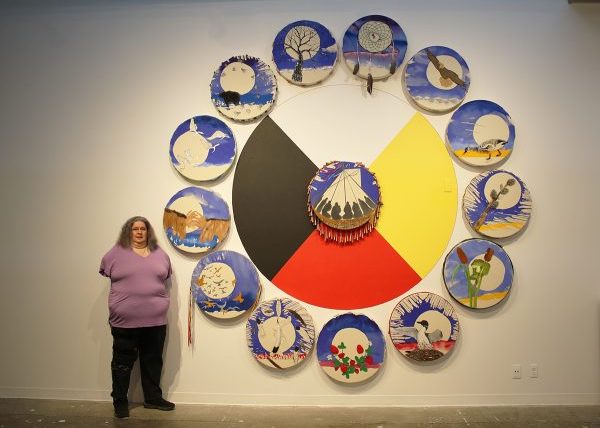
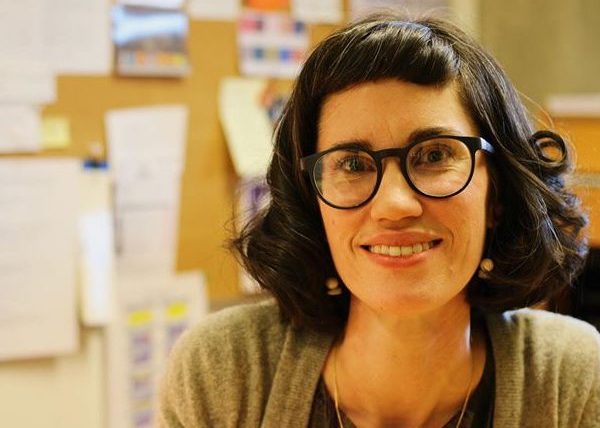
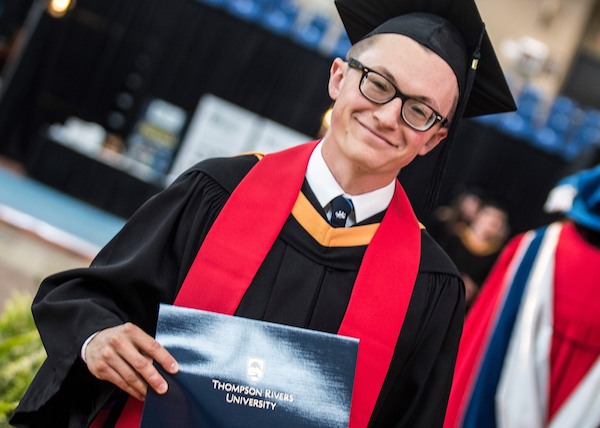
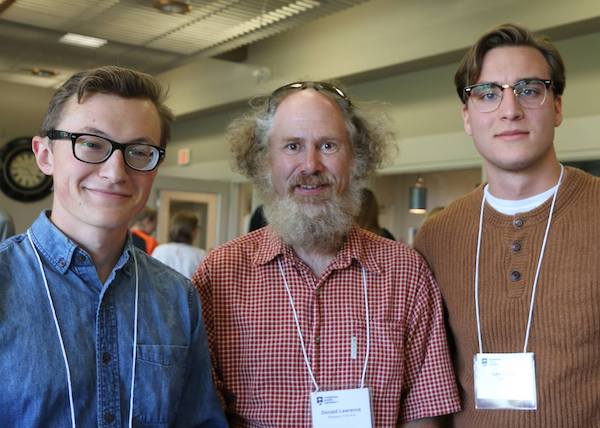
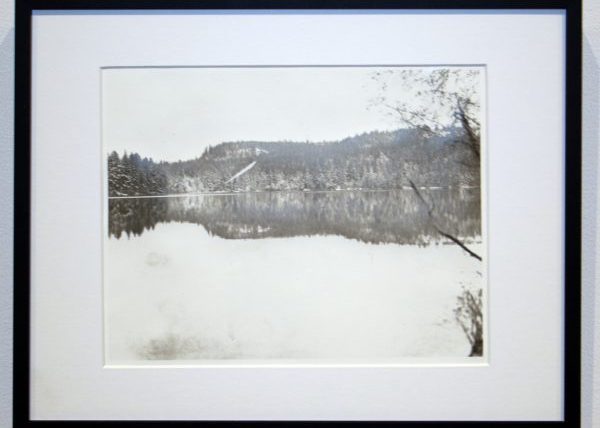
Program Details
- Credential
- Bachelor of Fine Arts
- Delivery
- Kamloops
- Length
- Four years
- International
- Open to international applicants
